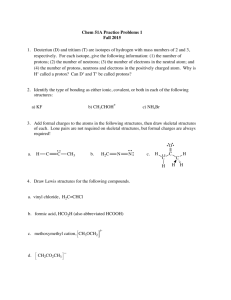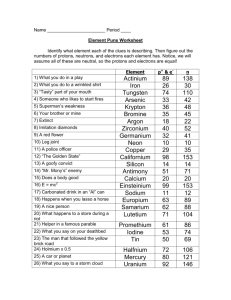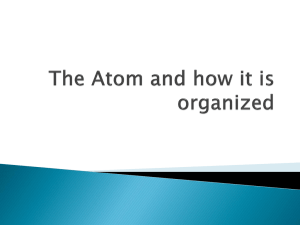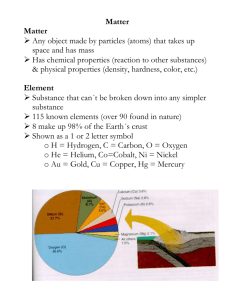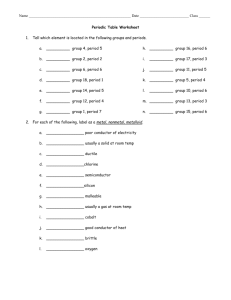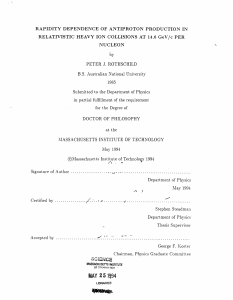PPTX
advertisement
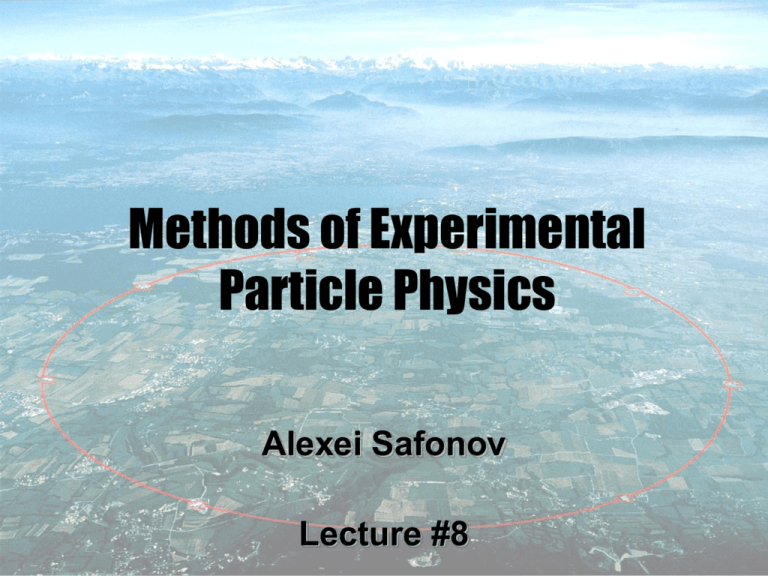
Methods of Experimental Particle Physics Alexei Safonov Lecture #8 1 Today • A few more words about accelerators 2 Tevatron at Fermilab • 2 TeV at center of mass • Decommissioned in 2011 3 Tevatron: Stages 4 Acceleration Stages 5 Making Protons • "To make the protons", physicists inject hydrogen gas into the metal cylinder Duoplasmatron- then surround it with an electrical field to break down the gas into its constituent protons and electrons. 6 Fermilab Linac • Linear Accelerator (Linac): • Approximately 500 feet long, • Accelerates the negatively charged ions to 400 million electron volts, MeV • Just after they enter the next accelerator, the ions pass through a carbon foil, which removes electrons from the hydrogen ions, creating positively charged protons. 7 RF Cavities • Typically a few tens of centimetres in length, they use a standing wave whose frequency is set such that it gives particles an accelerating push as they pass through. • If a series of electron bunches are being accelerated then the sign of the wave will flip from positive to negative as the bunch passes through the cavity, returning to positive as the next bunch arrives. • The size of a cavity is very important because it must be related to the frequency of the standing wave in order that there is an integer number of nodes (usually one) across it. 8 LHC RF Cavities • They seat in several straight regions of the beam and accelerate beams until they reach design energy 9 Booster • Booster: The Booster, located about 20 feet below ground, is a circular accelerator that uses magnets to bend beams of protons in a circular path. • The protons coming from the Linac travel around the Booster about 20,000 times. They experience an accelerating force from an electric field in a radio-frequency cavity during each revolution. • This boosts the protons’ energy up to 8 GeV by the end of the acceleration cycle. 10 Main injector • Main Injector: The Booster sends protons to the Main Injector. • The Main Injector: • Completed in 1999, has become the center ring of Fermilab’s accelerator complex. Before the Tevatron shut down, it had three primary functions that supported the Collider • It accelerated protons and antiprotons for injection into the Tevatron; • it delivered protons for antiproton production • it transfered antiprotons between antiproton storage rings and from the antiproton storage rings to the Tevatron. 11 Antiproton Source • Proton beams steered onto a nickel target. • The collisions produced a wide range of secondary particles, including many antiprotons. • The aniprotons enter beamline where they are captured and focused before injecting them into a storage ring, where they were accumulated and cooled. • Cooling the antiproton beam reduced its size and makes it very “bright”. After accumulating a sufficient number of antiprotons, antiprotons are sent to the Recycler for additional cooling and accumulation before being injected into the 12 Tevatron • Inside the tunnel: • Quadrupole and dipole magnets 13 Quadrupoles • Focus beams • Much like lenses in optics 14 • Dipoles: • Keep the beam on the orbit 15 LHC Complex • Similar layout. No anti-protons! 16 LHC Layout 17 Terminology • Luminosity: • How many protons you collide per second • Collider physicists usually use • Emittance and amplitude • High Lumi: lots of particles per beam, colliding as frequently as you can 18 Collisions at LHC 14 000 x mass of proton (14 TeV) = Collision Energy Protons fly at 99.999999% of speed of light 2808 = Bunches/Beam 100 billion (1011) = Protons/Bunch 7.5 m (25 ns) 7 TeV ProtonProton colliding beams Bunch Crossing 40 million (106) Hz Proton Collisions 1 billion (109) Hz Parton Collisions New Particles 1 Hz to 10 micro (10-5) Hz (Higgs, SUSY, ....) 19 “Largest Science Project in Human History” • Circular 27 km long tunnel • 50 - 175 meters underground • 2 beam pipes, 8 sectors • Sophisticated magnetic system: • 1,232 superconducting dipole magnets keep protons in the orbit • B = 0.5 – 8.3 T as protons accelerate from 450 GeV to 7 TeV • 392 superconducting quadrupole magnets to focus beams • Every magnet in sync with all others to keep the beam running • Biggest “refrigerator” in the world: • 40,000 tons of cold mass spread over 27 km • 10,000 tons of Liquid Nitrogen (300 K to 80 K) • 60 tons of Liquid Helium (cools the ring to final 1.9 K) 20 LHCHL-LHC Luminosity Profile • Disclaimer: above is a mix of official provisional projections and my own guesses. HL: Luminosity leveling CERN Accelerator Complex 1976 1972 LHC beam route 1959 LINAC2 BOOSTER (PSB) PS SPS Accelerator Upgrades: Injectors • Key element in increasing luminosity is higher beam brightness • Limited by space charge in injection synchrotrons • Requires upgrades to increase injection energies Accelerator Upgrades • Addition luminosity gains from improving the interaction regions: • Reduce squeeze b*=3.31.50.550.2-0.3m • New large aperture triplets, collimation and separation systems, optics at IR, later on crab RF cavities Luminosity (cm-2 s-1) • Luminosity leveling at L=51034 1.E+35 Nominal 8.E+34 35 1035 - no levelling Levelling at 5 10 6.E+34 34 4.E+34 2.E+34 0.E+00 0 2 4 6 8 time (hours) 10 12 HI-LHC: Future in Graphic Details • Every experimentalist’s ultimate nightmare! Next Time • Passage of particles through matter and how to build detectors 26
